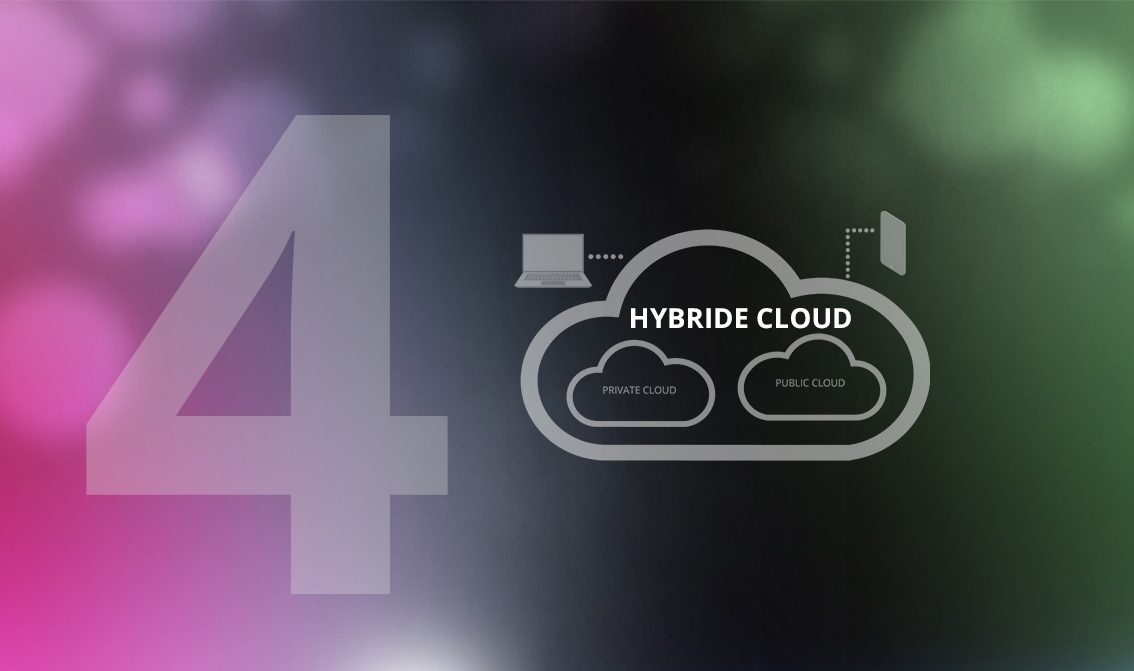
Successful transformation – how to make it run smoothly?
Dear Readers,
Having explored the opportunities and highlighted the risks of hybrid IT, one question instinctively arises: How does one proceed in terms of planning and implementation? Of course, the recommendations for implementing solutions will be different for each decision-maker, as they will need to be tailored to the specific goals and circumstances of the organisation. However, there are certainly key rules, or rather levers, that need to be considered for a successful transformation. Demand management, privacy, transparency, and individual capabilities are important factors to consider. I will explain what we mean by this below.
Defining needs is the first step
The first step is to answer the question of what hybrid IT, with its components of in-house solutions, on-premises and private, as well as evolving public cloud offerings, is actually intended to do. Prioritisation is advisable: Which aspects are particularly important for the company, i.e. must-haves, and which are less important, or rather nice-to-have or so-called delighters that play a subordinate role? This requires foresight – in the truest sense of the word. Because a delighter can quickly become a real must-have. An example that is familiar to everyone in the hotel industry is Wi-Fi. While a few years ago it was an exclusive service offered by the most advanced properties, today we all expect to have access to local Wi-Fi in every hotel around the world. In short, online access for guests has become a must-have for the industry.
For companies, the protection of sensitive data, contractual security with cloud providers, and cost traceability are top priorities as part of the IT transformation. These quality requirements are established, and if they were not, we would work towards them in our consultancy. Then there are the individual performance requirements that customers expect cloud solutions to meet. All requirements, whether basic or more specific, need to be formulated in order to be met by the IT deployment. It is important to note that the somewhat standardised service from the cloud may not always be sufficient to meet the defined requirements exactly. Local solutions may still be necessary, especially for highly customised industry solutions or infrastructure application components that need to comply with particularly high security requirements or legal regulations.
Needs determine the level of investment
Assessing your needs is the first step. After all, the quality requirements of hybrid IT, with its growing cloud components, are directly correlated with the costs charged by providers. In the complex world of IT, it is important to keep this simple principle in mind. Too often, people think that the most sophisticated solutions are available for free somewhere in the cloud. Believe me, nothing on the web is free. And if it is free, the figurative commodity is the company itself – the treasure trove of data it provides. The question then arises as to whether the demands placed on corporate IT can realistically be met at the cost that they are prepared to pay. In terms of demand management, this means: what level of service do you need from your provider? Which modules need to be implemented from the outset in order to meet the defined must-haves? If the answer is not well thought out, you may end up in an upgrade trap with more and more ad-ons at (high) prices. It’s like buying an inkjet printer at a low price and then having to buy expensive ink cartridges on a regular basis. There are similar examples in the hybrid IT world.
Managing privacy and visibility
From previous blog posts, we know about the opportunities and risks associated with complex hybrid IT. The levers now scale and control the benefits and risks. When it comes to data protection, risk affinity is a specific and critical premise. How much control is a company willing to give up over its data? What information should be shared with whom? The answers to these questions ultimately determine the choice of partners and ongoing management based on set criteria.
In addition to data handling considerations, the increased use of cloud offerings also brings forward the topic of transparency around the number of services being commissioned. This is an important lever that can and must be used to optimise control over the management of hybrid IT and save unnecessary costs. After all, you should not buy the same service multiple times from different providers. It is important to understand which offerings are already booked and used by the organisation. For example, if Salesforce is already in use, it would be counterproductive to set up Oracle as well. Especially in the corporate environment of large companies, it is easy to lose track of existing services. A central responsibility, such as procurement, is needed to prevent so-called maverick buying, i.e. ordering something without the knowledge of the responsible employee. This can only be achieved through rigorous procurement governance. With such a lever to oversee and control the process, the proliferation of applications can be effectively reduced.
Nothing works without people
Behind all these strategies and their implementation for a successful existence in the hybrid IT world are the people. The success of IT transformation depends on their skills and expertise. Specialised knowledge is required to manage the range of suppliers and to maximise the benefits of the contracted offerings. Skills need to be built at different levels and in all IT-related areas. Skillful customisation of cloud services, which tend to come off-the-shelf at the outset, requires expertise to avoid incurring additional expensive support costs from the provider. It also requires employees who can manage contractual issues with a critical eye and understand the, sometimes bizarre, pricing structures of cloud solutions in order to continually optimise cost-effectiveness. It is unlikely that one will get much cooperation from the provider. Expertise and commitment are required in all areas.
Ongoing training and development are important prerequisites for the development of employees and their level of maturity. Employees must be able to take on and maintain responsibility as well as effectively orchestrate the complex hybrid enterprise IT with its network of internal and external stakeholders.
The levers for managing digital transformation are undoubtedly complex. Even experienced professionals face significant challenges. Thus, an external perspective can be very helpful. This is where AXXCON comes in. We are ready to accompany the process both critically and constructively and be a reliable partner on your journey.
Best regards!
Your Sourcing Team



